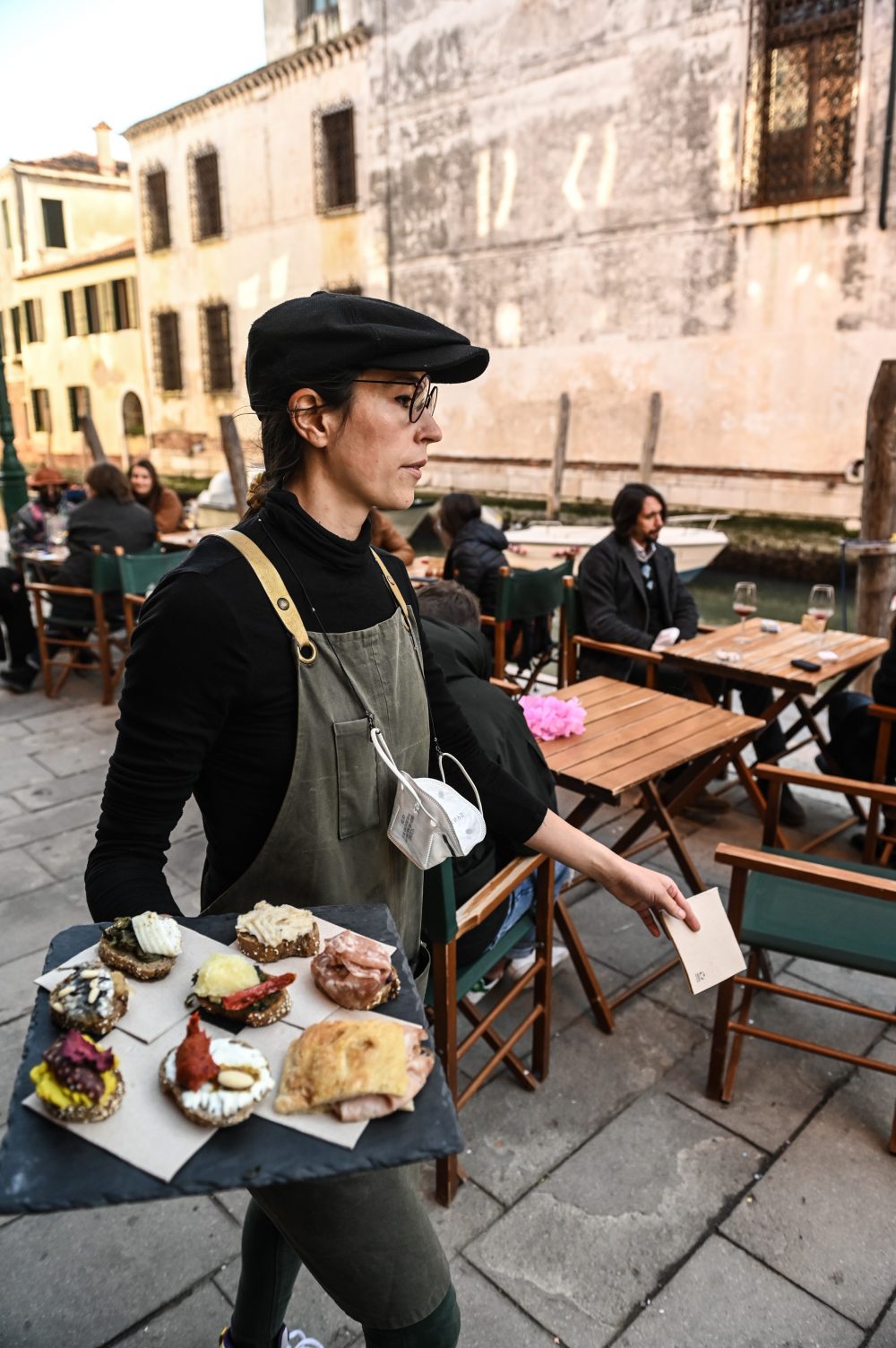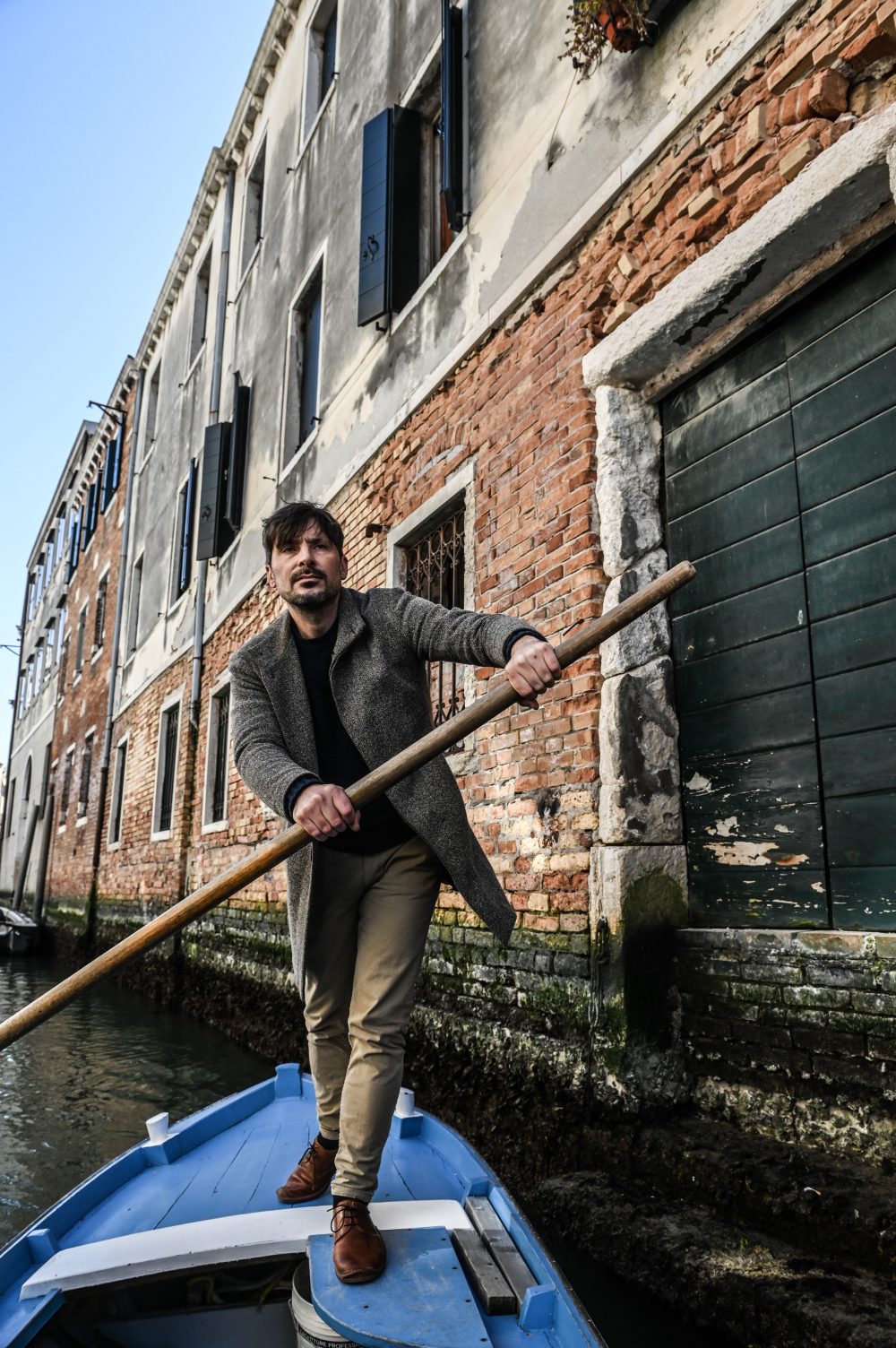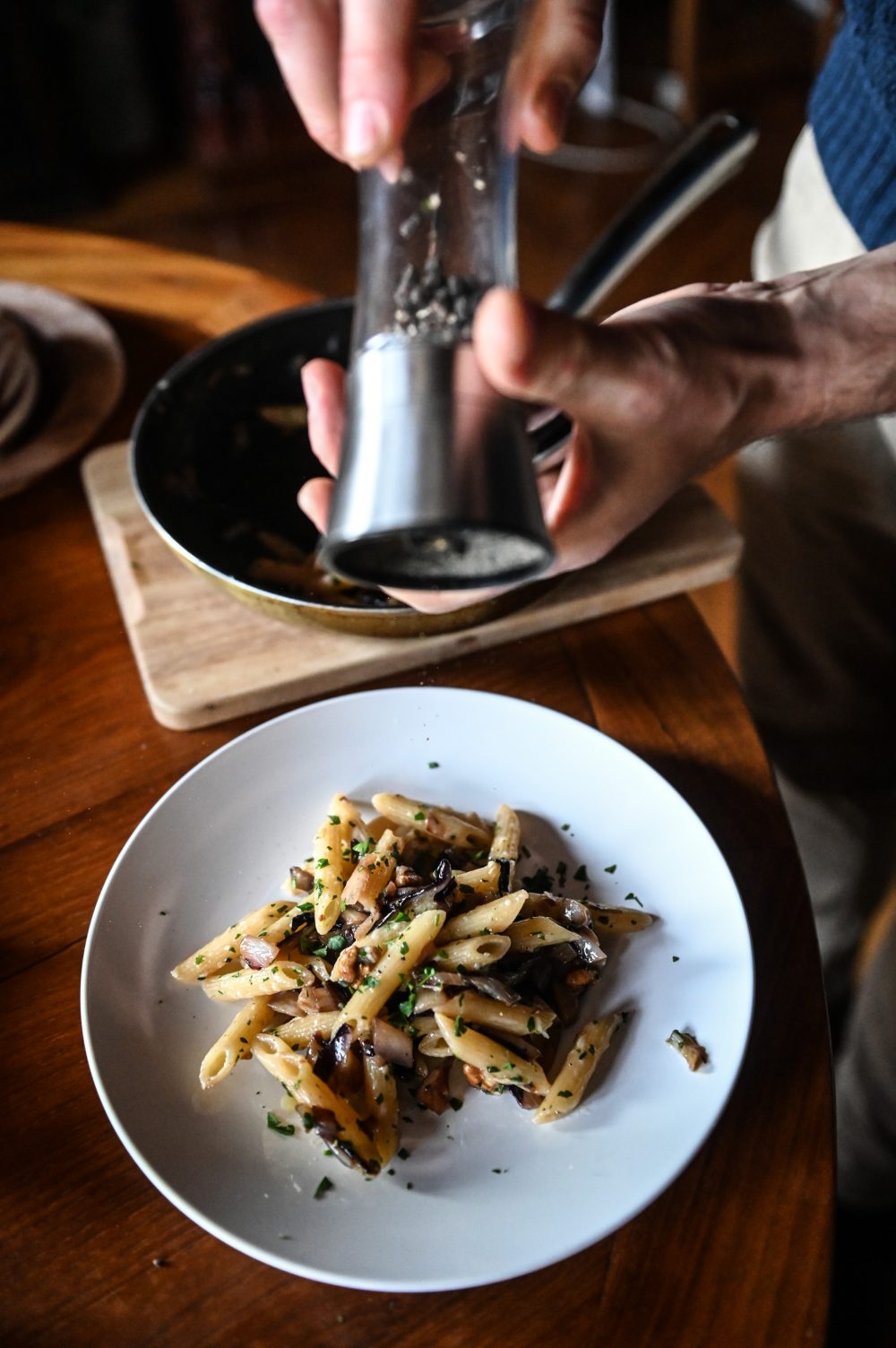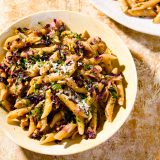
Morning sun splashing off the rippling canals turns the wine and Aperol spritzes into gems, the clustered glasses glowing golden and ruby. Venice, after all, is a drinking town. And by 10 a.m. the crowds gathered at bistro tables along Rio Della Misericordia—or River of Mercy—may well already be onto their second or third pour.
It’s part of Venetians’ deliciously peculiar relationship with bars, which open early and from which emerge dozens of cicchetti, small bites of savory nibbles nestled onto crostini or polenta. Baccalà mantecato, a pâté made from dried salt cod, is classic. But there also are tiny potatoes fried with rosemary. Hard-cooked eggs with anchovies. Dozens of cheeses. Mushrooms bathed in herbs and oil. Bitter greens sautéed with garlic and chili.
Custom calls for meandering the canals with friends, stopping at one bar after another, chasing each bite with an ombra de vin, tiny glasses that translate as a shadow of wine. Some people walk. True Venetians boat, plying the waterways with flat-bottomed gondolas that can stretch 32 feet, navigating from standing perches at the back with a long wooden paddle.
This is how I meet—and drink with—Francesco Bernardi, a university librarian and talented home cook who offered to introduce me to cicchetti culture as well as some of Venice’s classic pastas and risottos. All of it by traversing the canals in a bright blue gondola he uses as part of one of the city’s many boating cooperatives that make ownership accessible.
In time, we wind our way, water lapping as we duck our heads to clear low-lying pedestrian bridges overhead, to Rialto Mercato, an open-air market beneath a stone pavilion at the edge of the Grand Canal. Boisterous fishmongers taunt one another, shouting joking insults back and forth amid cascades of laughter. That seafood dominates the city’s cuisine is obvious, if only by the richness of the lagoon on which it sits and the antics of the many men and women selling it.
Less obvious is the love of radicchio. That is, until you see the heaps of the crispy, bittersweet and brashly purple vegetable piled high at one stall after another. It makes its way into numerous cicchetti, sometimes raw and cupping other nibbles, sometimes tender and sautéed to sweetness. We buy a bagful from which Bernardi promises a simple, rich pasta.
Back at his loft apartment—a crisscross of ancient wooden beams overhead, windows with views of piazzas, shelves with jars of capers, spices, wine corks and olive branch sprigs—Bernardi tosses a pile of penne to boil in a bare amount of water. It’s a technique we see over and again across Italy, cooking pasta in far less water than expected. It’s a simple trick for creating a particularly starchy water, which itself becomes a key ingredient.


While the pasta cooks, Bernardi combines olive oil and lightly crushed garlic in a skillet, cooking them just enough to flavor the oil before discarding the cloves. It’s yet another subtlety sometimes missing from Italian-American cooking, which tends to add garlic by heaps and mounds. In Italy, garlic isn’t brash; it’s a nuance. Use it to flavor the oil, but no more.
Bernardi—who learned to cook from his mother, as well as from the sort of fascination with cookbooks one expects from a librarian—then tosses in sliced radicchio, which wilts for less than a minute, long enough to retain a slight crunch, yet also sweeten with the heat. It is followed by the now just-tender pasta as well as the super starchy cooking water clinging to it.
You can see the sauce come together almost immediately, the water thickening and pulling the ingredients together. Chopped walnuts, parsley, black pepper and ample olive oil follow and coalesce. Then, a handful of grated and gloriously briny cheese made by his cousin from three or four cows in the nearby mountains. It melts and—again thanks to all that starchy water—emulsifies into a smooth sauce.
The finishing flourish, a drizzle of brightness—lemon juice that so perfectly balances the rich cheese and nuts. The result is an amazing blend of salty-savory-sweet-bitter, the walnuts adding both crunch and creaminess. Good enough, in fact, to make me forget I’ve been drinking since 8 a.m.





